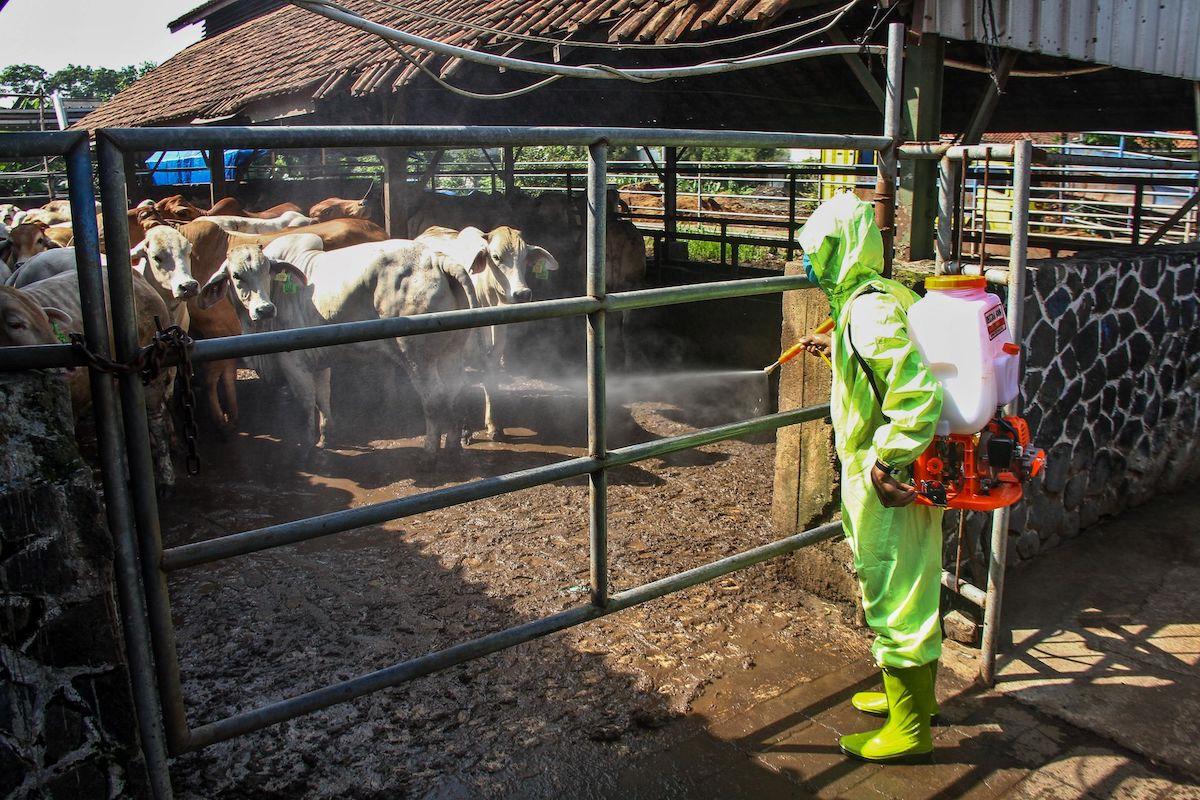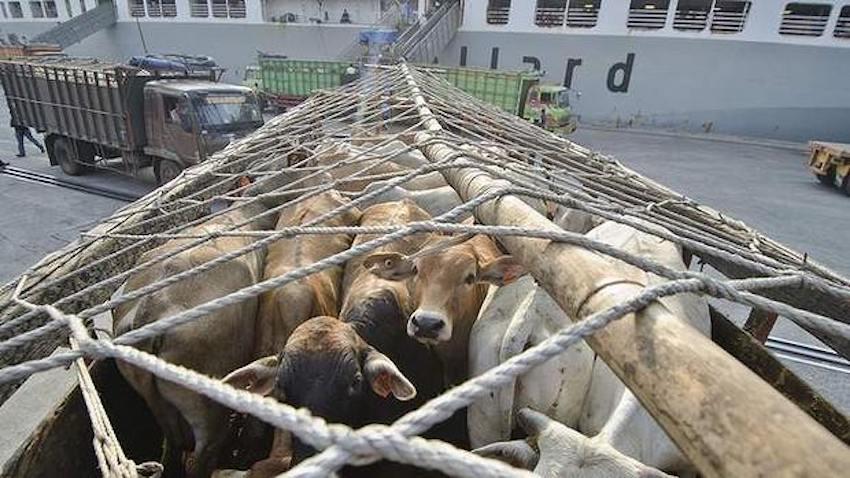(MENAFN- Asia Times)
Indonesia's dairy and cattle industries are in danger from a resurgence of deadly foot-and-mouth disease (FMD) and an outbreak of another viral scourge known as Lumpy Skin Disease (LSD), both of which require a mass vaccination program if they are to be brought under control.
The Agriculture Minister declared an emergency after outbreaks of FMD in what industry sources say is now as many as 16 provinces, encompassing parts of Sumatra, Java, Kalimantan, Bali and Lombok, the first time the disease has been detected in Indonesia since 1986.
LSD initially surfaced among small dairy and beef farmers in Sumatra earlier this year and now poses a potential threat to larger farming operations on Java, with critics complaining that the government has so far only taken a piece-meal approach.
Both diseases are not harmful to humans, but can have a devastating impact on livestock production and international trade, particularly for primary-producing countries like Australia and New Zealand, the biggest suppliers of live cattle and milk products to Indonesia.
In a recent Southeast Asian Beef Market Report, veterinarian Ross Ainsworth warned that East Java's proximity to Bali, where Australian tourists are rediscovering their favorite holiday destination, presents“a greatly heightened risk of disease transmission to Australia.”
First detected in mid-April, industry sources say this year's Ramadan celebrations a fortnight later only exacerbated the FMD problem, with the government apparently unwilling to shut down markets as a crucial first step toward controlling the spread of the disease.
For now, they say, the Agriculture Ministry will have to focus on a selective vaccination program targeting the worst-hit areas until they have sufficient stocks to take a more holistic approach. As one trade official put it:“They will have to live with it and just chip away.”

A man sprays disinfectant to prevent the spread of foot-and-mouth disease in Bandung, Indonesia, on May 18, 2022. Photo: Facebook
FMD has wider implications
About 43% of Indonesia's 16.6 million head of beef cattle is grown on Java and another 25% on the eastern Nusa Tenggara island chain. Similarly, half of its 500,000 dairy cows are found in East Java, mostly tended by small village co-operatives.
LSD is carried by mosquitos and other biting insects and only affects dairy cows and beef cattle, while FMD has wider health repercussions for pigs, sheep and goats and is spread through an animal's breath, saliva, mucus, milk and feces.
FMD captures the most media attention, largely because of the drastic measures Britain was forced to take in the early 2000s, killing more than six million cows and sheep in what was eventually a successful effort to eradicate the disease.
How FMD re-entered Indonesia is open to speculation, but officials believe it was in infected sheep and goats smuggled across the Malacca Strait from neighboring Malaysia, where the disease is endemic.“That's the most plausible hypothesis,” says the trade official,“but there is no smoking gun.”
Some suspicion also rests with Indian buffalo meat, which Indonesia began importing in annual quantities of up to 100,000 tonnes in 2015, four years after Australia temporarily suspended live cattle exports over animal welfare concerns.
Pork leftovers from airline meals fed to pigs has been widely blamed for the outbreak in Britain, while in the Philippines, frozen meat from India – where FMD is also endemic – was suspected of allowing the disease into the island of Luzon in the mid-1990s.
Strangely, Indonesian officials don't list that hugely profitable business as a possible cause of the outbreak. The actual meat itself isn't a problem, but livestock experts say the danger lies in embedded bone chips which can carry the disease.
Whatever the cause, the outbreak is a major disappointment for Australian animal husbandry scientists who helped Indonesia eradicate FMD in a concerted campaign through the 1970s and early 1980s after remaining unchecked for more than a century.
The new outbreak is not expected to disrupt the still-thriving live-cattle trade with northern and western Australia, given the fact that the 400,000-500,000 animals shipped to mainly Sumatran feedlots each year are usually slaughtered after 90 days.

Australian cattle arriving in Indonesia. Photo: WikiCommons
Imports making up for shortfalls
Its quest for beef self-sufficiency stalled, the Indonesian government has continued to import the low-quality Indian meat to make up for an ongoing shortfall and to reduce the country's reliance on costlier Australian beef imports.
Although the state-run Bulog logistics agency has set the price of Indian beef at 80,000 rupiah (US$5.4) a kilogram, it is typically being sold for Rp120,000-130,000 ($8.2-$8.8) in wet markets, not that far below the Rp168,000 ($11.6) price tag for quality feeder beef.
Lumpy Skin first appeared in small farm lots in Sumatra earlier this year and now threatens larger dairying operations on Java; critics say officials have so far taken a piece-meal approach that won't prevent the virus from spreading.
East Java has about half of Indonesia's beef and dairy cows and 65-70% of its annual milk production of 222 million liters, though consumption is only 16.5 liters per capita, compared with 31 liters in Thailand and 110 liters in Belarus and Ukraine.
Already fraught with problems presented by a tropical climate, Indonesia's modest dairy industry is generally confined to small lots of two or three cows, meeting only a fifth of local demand which continues to rise by about 10% a year.
Greenfields, the country's largest, Australian-run dairy farm in East Java's hilly Malang district, has not detected any instances of FMD and LSD among its herd of 19,500 Holstein and Jersey cows, which produce 90 million liters of fresh milk a year.
With most of the focus on small farmers, large-scale commercial farm enterprises can't help themselves because under emergency disease legislation only the government is permitted to import and control the roll-out of vaccines.
Greenfields has introduced strict bio-security precautions on its two farms, denying entry to trucks that have carried cattle and spraying vehicles and the footwear of farmworkers. But as one manager put it:“It's never going to be enough.”
Traditionally found in sub-Saharan Africa, LSD reduces milk production, damages hides and triggers sterility in bulls and infertility in cows. It was first reported in Asia in 2019 with outbreaks since occurring in Malaysia, Thailand, Laos, Vietnam and Myanmar.
In Indonesia, it appears to have been largely confined to resource-rich Riau, in southern Sumatra, where agriculture officials started a program last March to vaccinate 2.7 million cattle across seven of the province's nine rural districts.
But large farm operators fear that won't be enough, with further outbreaks reported in Aceh, Jambi and West Sumatra increasing the risk that the disease could spread to Sumatra's feedlots and into Java and possibly Australia, where it has never been detected before.
MENAFN19052022000159011032ID1104239435